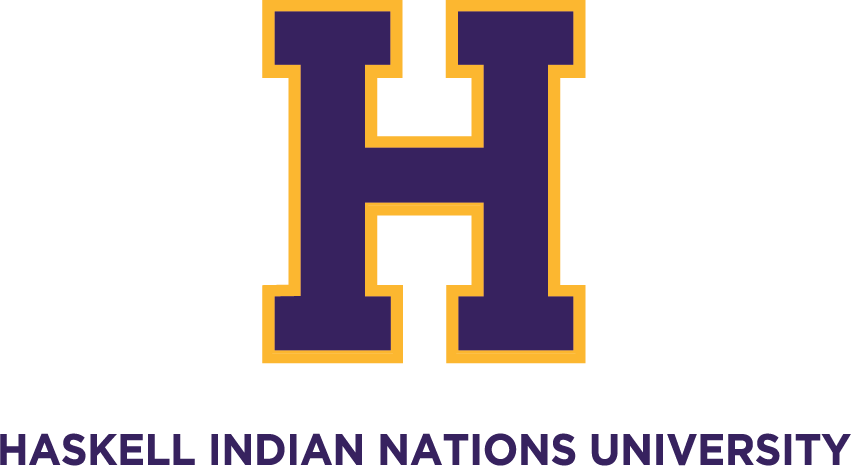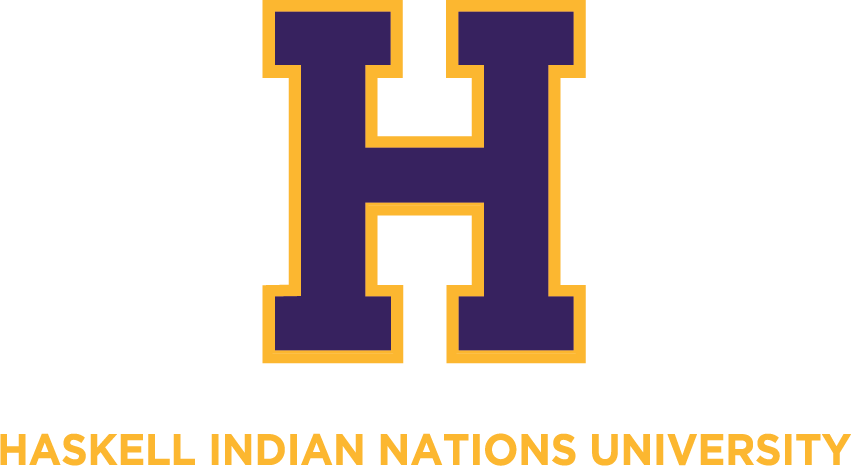Haskell History
1884: The United States Indian Industrial Training School
In 1884, twenty-two American Indian students entered the doors of a new American Indian boarding school in Lawrence, Kansas, to begin an educational program that focused on agricultural education in grades one through five.
Originally named the United States Indian Industrial Training School, enrollment quickly grew from its original 22 students to over 308 by the end of 1884. The early trades for boys included tailoring, wagon making, blacksmithing, harness making, painting, shoe making, and farming. Girls studied cooking, sewing, and homemaking. Most of the students’ food was produced at the school’s farm, and students were assigned various duties throughout the institute. In 1887, the school was renamed Haskell Institute, after Kansas representative, Dudley Haskell, who had led efforts to open the school in Lawrence, Kansas.
1890s: Expanding Beyond Elementary Education
Ten years passed before the school expanded its academic training beyond the elementary grades. A “normal school” was added because teachers were needed in the students’ home communities. The commercial department (the predecessor of today’s College of Business) opened in 1895 with five typewriters. The first touch-typing class in Kansas is believed to have been taught at Haskell.
1920s – 1930s: Accredited High School and Athletic Success
By 1927, high school classes were accredited by the state of Kansas, and Haskell began offering post-high school courses in a variety of areas. Part of Haskell’s attraction was not only its post-high school curriculum but also its success in athletics. Haskell football teams in the early 1900s to the 1930s are legendary, and you can learn more about it at Clio’s Haskell Memorial Stadium.
1930s – 1960s: Industrial Training and Vocational Education
Industrial training became an important part of the curriculum in the early 1930s, and by 1935 Haskell began to evolve into a post high school, vocational-technical institution. Gradually, the secondary program was phased out, and the last high school class graduated in 1965.
1970s: Becoming Haskell Indian Junior College
In 1970, Haskell was approved to be accredited as Haskell Indian Junior College. It offered associate degrees in American Indian Studies, Business, Nursing, and Printing along with continued vocational training in fields such as carpentry and auto mechanics.
1990s: Becoming Haskell Indian Nations University
In 1992, after a period of planning for the 21st century, the National Haskell Board of Regents recommended a new name to reflect its vision for Haskell as a national center for Indian education, research, and cultural preservation. In 1993, the Assistant Secretary for Indian Affairs approved the change, and Haskell became “Haskell Indian Nations University.” In 1998, the University graduated the first Elementary Education majors in its baccalaureate program. It also offered bachelor’s degrees in American Indian Studies, Business, and Environmental Sciences while retaining its associate degree programs.
Haskell Today – Honoring the Past, Embracing the Present, and Building the Future
For over 140 years, Haskell Indian Nations University has remained dedicated to serving Alaska Native and American Indian students in partially fulfillment of trust responsibility between the United States and Indian Country. What began in 1884 as an assimilation-era American Indian boarding school has grown into a nationally recognized, accredited university that makes a positive difference in the lives of our students. We do this by respecting Indigenous knowledge and cultures throughout our certificate and degree programs—as well as across our campus—while welcoming more than 900 students each semester from federally recognized tribes across the United States.
As a federally supported institution within the Bureau of Indian Education, Haskell offers an affordable, quality education in a supportive environment designed for Indigenous students. Our undergraduates gain a meaningful college education while being part of a vibrant intertribal community that values tradition, innovation, professional and career development, and personal growth.
With a strong academic foundation that is connected to Native cultures, Haskell graduates are prepared for whatever path they choose. Onward Haskell!
To learn more about Haskell Indian Nations University, explore these resources:
- Academic Programs – Discover the certificates and degrees available at Haskell.
- Haskell Cultural Center – Explore the University’s history, view exhibits, and much more.
- Readings: Haskell’s history has been the subject of numerous articles and books. Start here to dive deeper into our rich past.


